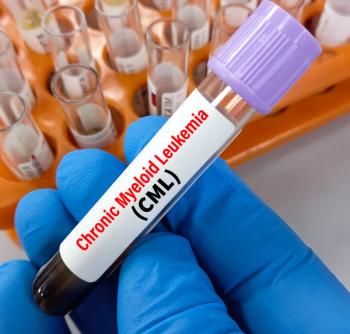
- Volume 0 0
Outlook: Obesity Epidemic
Elderly Lose Muscle Mass WhenDieting Without Exercise
A group of sedentary and overweightolder individuals placed on a 4-monthexercise program not only becamemore fit, they burned off more fat, comparedwith those who dieted but didnot exercise, according to a study publishedrecently in the Journal of AppliedPhysiology.
Researchers at the University ofPittsburgh studied a group of 64 participantsaged 60 to 75 who were eitheroverweight or obese; all were sedentaryat the outset of the study. They weredivided into 3 groups: exercise only,diet only, and exercise plus diet. Thediet-only group's weight loss resultedfrom a loss of both muscle and fat, andthose who dieted without exercisinglost more lean muscle, compared withthose who exercised. When weight losswas combined with exercise, however,it nearly completely prevented the lossof lean muscle mass.
The exercise plus diet group alsoproved to be most efficient at the exercisetask (either walking on a treadmillor riding a stationary bicycle) at the endof the experiment and, like the exercise-onlygroup, drew more on fat stores asan energy source.
Kids Prefer "Texting" Their Food,Exercise Diaries
A study of children aged 5 to 13 foundthat those who kept track of their dailyfood intake, exercise, and screen timeby using text messaging were twice aslikely to keep such records when comparedwith those using old-fashionedtypes of paper-and-pencil diaries.
Previous studies have shown thatdieters who keep records are morelikely to lose weight and keep it off. Forthis study, children and parents participatedin 3 weekly group educationsessions aimed at encouraging them toincrease physical activity and decreasescreen time and consumption of sugar-sweetenedbeverages. They were askedto record their behaviors via short-messageservice or paper diaries, alongsidea no-monitoring control group.
Researchers at the University of NorthCarolina at Chapel Hill then comparedthe participants' adherence to self-monitoringand found that those who usedtext messaging had significantly greateradherence. The researchers note thatalthough the approach "may be a usefultool for self-monitoring healthfulbehaviors in children," further studyis needed. The implications do suggestthat novel technologies may playa role in improving health, accordingto the investigators. The findings werepublished in the November/December2008 issue of the Journal of NutritionEducation and Behavior.
Large Waistline Risky for All
A large waistline can almost double therisk of dying prematurely, even witha body mass index (BMI) in the normalrange, according to findings froma recent study of 350,000 individualsacross Europe.
Comparing participants with thesame BMI, researchers found the riskof premature death increased in a linearfashion as the waist circumferenceincreased. Each 5-cm increase in waistcircumference increased the mortalityrisk by 17% in men and 13% in women.The ratio of waist to hips was revealedas an important indicator of health inthe study.
The risk of premature death wasapproximately double for patients witha larger waist (>120 cm or 47.2 in formen and >100 cm or 39.4 in for women),compared with those individuals witha smaller waist (<80 cm or 31.5 in formen and <65 cm or 25.6 in for women).Although the main new finding of thisstudy is that waist size increases therisk of premature death independentof BMI, the study does support earlierfindings showing that a higher BMI issignificantly related to mortality.
The new research forms part of theEuropean Prospective Investigation intoCancer and Nutrition (EPIC), one of thelargest long-term prospective studies inthe world.
"The good news is that you don't needan expensive test and wait for ages forthe result to assess this aspect of yourhealth—it costs virtually nothing to measureyour waist and hip size," said ProfessorElio Riboli, MD, MPH, the Europeancoordinator of the EPIC study.
The findings were published in theNovember 13, 2008, issue of the NewEngland Journal of Medicine.
CDC Issues New Guidelines forPhysical Activity
Recently released guidelines fromthe Centers for Disease Control andPrevention say that a minimum of 150minutes of moderate-intensity physicalactivity per week, such as brisk walking,or 75 minutes per week at a level of vigorousintensity, is necessary to producesubstantial health benefits in adults.
The "2008 Physical Activity Guidelinesfor Americans" marks the first time thefederal government has issued a comprehensiveset of guidelines on physicalactivity, noted US Department of Healthand Human Services Secretary MichaelLeavitt. The guidelines are intended tobe a primary source of information forhealth professionals and the public andare based on an extensive review of thescientific data on physical activity publishedsince the 1996 Surgeon General'sReport on Physical Activity and Health.
The full set of guidelines for bothchildren and adults can be accessed at
Articles in this issue
over 16 years ago
Coagulation Counselingover 16 years ago
Avoiding Antimicrobial Misuse: Delaying the Postantibiotic Eraover 16 years ago
OTC Product Newsover 16 years ago
Urinary Tract Infectionsover 16 years ago
Can You Read These Rxs?over 16 years ago
Treating Insomniaover 16 years ago
Case Studiesover 16 years ago
Pharmacist Expert Adviserover 16 years ago
Arthritis WatchNewsletter
Stay informed on drug updates, treatment guidelines, and pharmacy practice trends—subscribe to Pharmacy Times for weekly clinical insights.





















































































































































































































